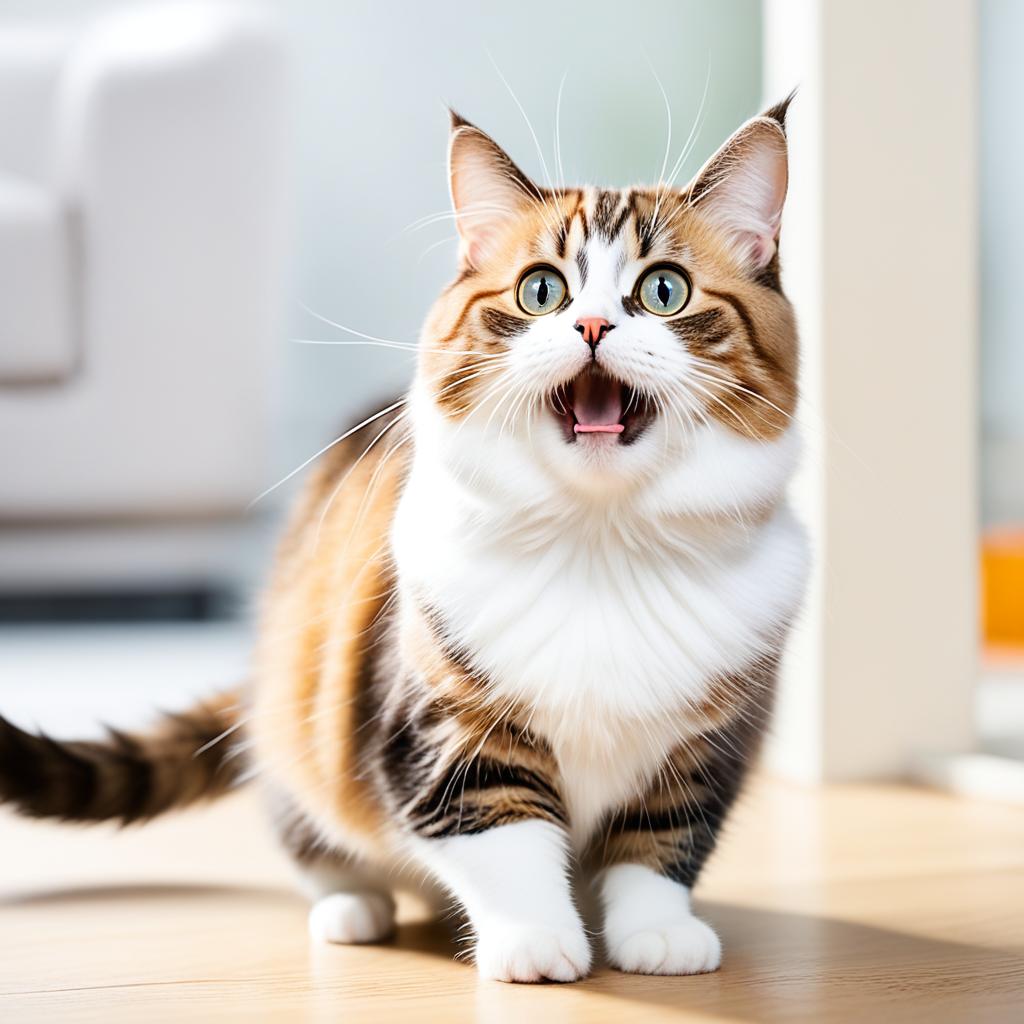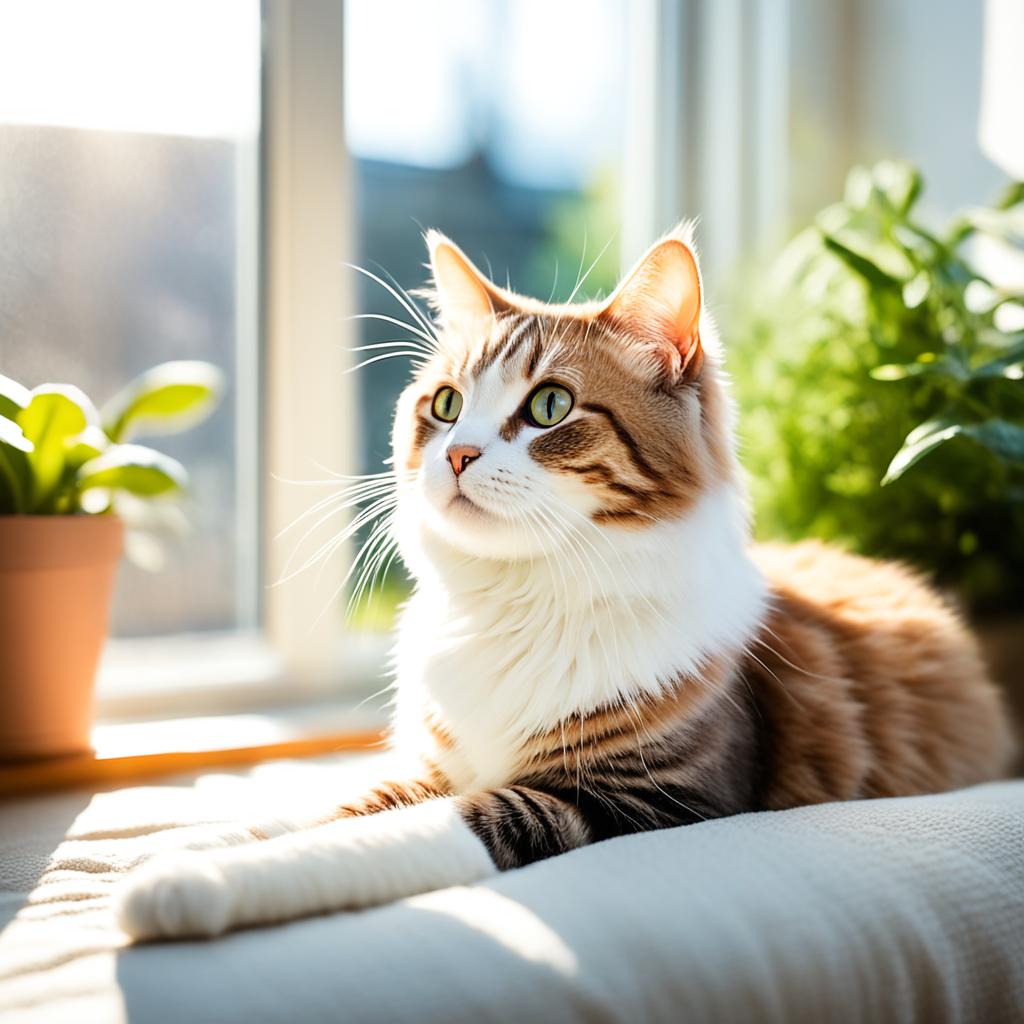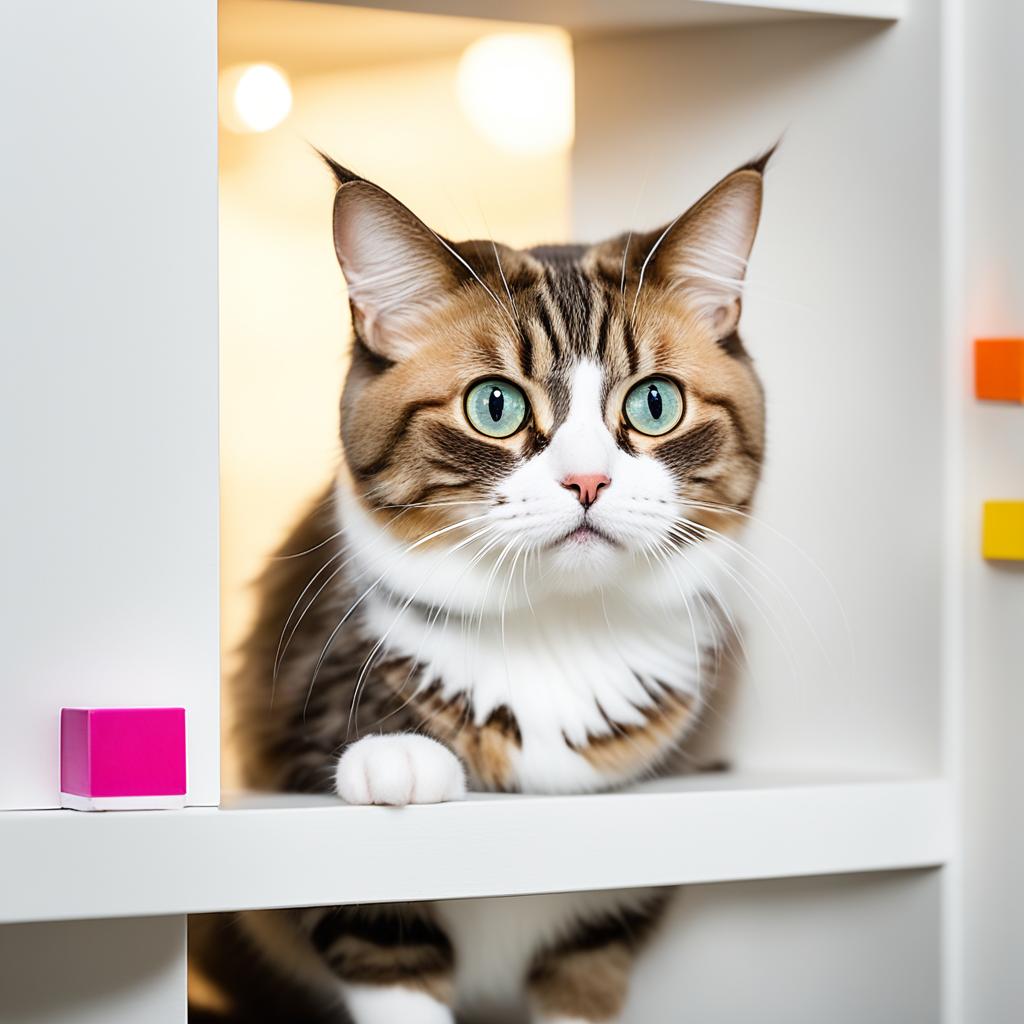Ever seen a small cat boldly explore a big, new world? Munchkin Cats bring charm and bravery despite their small legs. Their unique look comes from a genetic twist. Yet, it doesn’t slow them down. These cats from the United States are often said to act like Corgis, full of life.
Introducing them to a new place takes a smooth and slow start. They love regular care, such as grooming and health check-ups. A Munchkin Cat in Canada showed amazing change after being rescued. This proves they blossom with the right care and time.
Starting anew with a Munchkin? Or looking for tips as a seasoned owner? It’s all about knowing what they need. Let’s explore the best ways to welcome a Munchkin Cat.
Key Takeaways
- Munchkin Cats, with their short legs, are surprisingly energetic and playful.
- They originate from the United States and are cherished for their affectionate nature.
- Slow and thoughtful introductions to new environments help these cats adapt.
- Consistent care, including grooming, a balanced diet, and regular vet check-ups, is crucial for their well-being.
- Recent rescues in Canada show that Munchkin Cats respond well to love and patience.
Understanding Your Munchkin Cat’s Unique Needs

Munchkin Cats are indeed charming with their short legs, thanks to a genetic mutation. This mutation gives them a dwarfism-like condition. It affects their care and behavior in unique ways. Knowing about their special needs is important for their well-being.
Genetic Traits and Their Impact
Munchkin Cats’ short legs are more than just cute. They are caused by a genetic mutation. This can lead to some health issues. But, many cats with this mutation are healthy with the right care.
Regular visits to the vet are vital. They help manage any risks. Knowing about this genetic mutation guides us in caring for these lovely cats.
Typical Behavior Patterns
Munchkin Cat Behavior is marked by intelligence and sociability. They are playful and loving pets. Their curious and interactive nature helps them settle in new places.
Training in a new environment uses these traits. It helps Munchkin Cats feel at home in any new space.
Preparing for the Move: Essential Steps

Planning your move early is crucial for your Munchkin Cat’s ease. Start making changes well in advance to make the cat comfortable with changes. Introduce them to their travel carriers and the things you’ll pack, so they get used to them. This will reduce their stress about the move.
Using Feliway sprays can really help. They make the items your cat will see as they move more familiar and less scary. Spray them around your home, focusing on places where your cat spends a lot of time, for a calming effect.
It’s important not to change everything at once. Keep things around that smell like home, like their favorite furniture, for as long as you can. This keeps your cat feeling secure and helps them adjust to a new home easily.
Here’s a simple guide to follow:
- Get your cat used to carriers and things you’ll pack early on.
- Use Feliway sprays to create a peaceful living space.
- Keep furniture with your cat’s scent to comfort them until you leave.
Following these steps will help your cat feel more secure about the move. It will be easier on you and your feline friend.
Creating a Safe Space in Your New Home

Moving to a new home with a Munchkin Cat is about more than unpacking. It’s about creating a safe space where your cat can feel safe. This starts their new journey on the right path.
Choosing the Right Room
The first step in cat introduction is picking a ‘safe-room.’ This should be a quiet area, away from noise. An ideal spot could be a bedroom or cozy den.
It needs to have your Munchkin Cat’s food, water, and litter box close. This makes things easy for them.
Setting Up Familiar Items
Making the room feel like home is important. Fill it with your cat’s favorite stuff. This includes well-used litter, scratching posts, and their preferred spot for food and water.
Items with their familiar smell, like fabrics and blankets, are a must. These can cut down on anxiety. They make the change seem less scary to your cat.
| Familiar Item | Benefit |
|---|---|
| Kitty Litter | Provides a recognizable scent and area for elimination |
| Scratching Posts | Marks territory and helps relieve stress |
| Unwashed Fabrics | Offers comforting and familiar scents |
With a good plan for your cat introduction, you can help your Munchkin Cat feel at home quickly. They can go from shy to bold in no time.
How to Introduce a Munchkin Cat to New Environments?

Introducing your Munchkin Cat to a new place needs patience and softness. Keep them in a safe room first, full of things that smell like home. Let them explore when they’re ready.
Make the change easy by mixing old with new. Stick to a schedule that feels reliable but lets your cat be independent. This way, introducing cats to new places feels calm and not too much all at once. Always aim to make the space peaceful and interesting.
Take a smart, caring approach to introducing a Munchkin Cat to their new world. This ensures they adjust well and enjoy their new home.
Calming Techniques During the Move

Moving can be rough for both you and your Munchkin Cat. However, there are some good methods to lessen the stress. This part is all about tips to make the move smoother.
Using Familiar Scents
Calming techniques often involve familiar scents. Feliway spray, which smells like cat pheromones, is great. You can also put your cat’s scent on towels and toys and place them in the carrier. This makes your Munchkin feel safer in a new place.
Transport Strategies for Minimal Stress
Keeping transport calm is crucial. Make sure the car is quiet and comfy. Your cat should always be in its carrier to avoid stress. Also, put familiar kitty litter in the carrier to help them feel more at home. These are key steps in keeping your Munchkin Cat calm on the move.
Initial Introduction to the New Environment

The first days in a new place are vital for a Munchkin Cat’s comfort. They should start in a safe-room, filled with familiar items. These early steps help them feel safe and adjust. Slowly, move them to other rooms to build their confidence.
Step-by-Step Process
Start the New Environment Training with baby steps:
- Begin by keeping the cat in the safe-room. This area reduces stress, making the transition easier.
- Put in the cat’s favorite toys, bed, and old unwashed items. This small action makes a big difference in their adjustment.
- Next, place food and treats close to the safe-room’s door. This will make your cat curious and encourage exploration.
Monitoring and Adjusting
Watch your cat for stress signs and adapt your strategy:
- Check their eating habits. If they’re not eating, it could mean they’re stressed.
- Keep an eye out for too much hiding. If they hide a lot, slow down the introduction process.
- If they show unusual behavior like being extra aggressive or very tired, it’s a sign they’re not comfortable. Changing your approach can make a big difference.
| Signs of Comfort | Signs of Stress |
|---|---|
| Regular eating habits | Refusal to eat |
| Active exploration | Constant hiding |
| Playfulness | Aggressive behavior |
It’s important to keep a close watch and adjust the approach for a smoother Cat Socialization process. Remember, taking it slow, watching them carefully, and gently encouraging them is essential.
Building Confidence in the New Space

Boost your Munchkin Cat’s confidence by starting with routine playtime. Use toys the cat is familiar with to make this time joyous. Positive interactions are key; they make the cat happier and more at ease.
Some cats need extra time and care. Be patient. As your Munchkin Cat shows more interest each day, you’re making progress. Regular play sessions will help it feel more secure and build its confidence.
“Every playful pounce is a small leap toward a confident, happy cat.”
Keep playtime regular to help your cat feel at home in the new space. Use its favorite toys and slowly add new ones. When you see your cat exploring and playing more, you’ll know it’s feeling confident and thriving.
| Activity | Benefit |
|---|---|
| Playtime with Familiar Toys | Associates new space with positive experiences, aiding in cat introduction |
| Consistent Encouragement | Boosts Munchkin Cat behavior and confidence |
| Patience and Gentle Coaxing | Allows timid cats to feel at ease gradually |
Handling Setbacks and Anxiety
Plans can surprise us with bumps, and getting a Munchkin Cat used to a new place can be tricky. It’s common for them to hide or be scared to explore at first. If you see this, reacting early and wisely is key. Use things like pheromone sprays and keep their familiar stuff close to help them feel safe.
Munchkin Cats, just like us, need to trust new places slowly. Rushing them can make their fears worse. Instead, be calm and let them check things out when they’re ready. Giving them quiet spots and items with their smell nearby can really help.
If your cat seems stressed, handle it with care. You can help them feel more secure by moving their toys and treats a bit closer each day. It’s all about understanding and responding to what they show you. Staying calm and patient will pave the way for your Munchkin Cat to adjust without too much stress.




